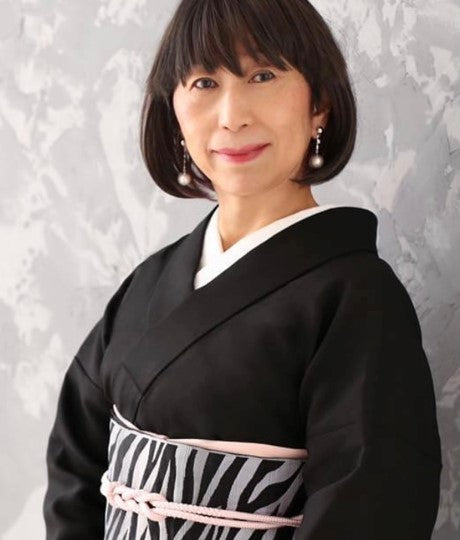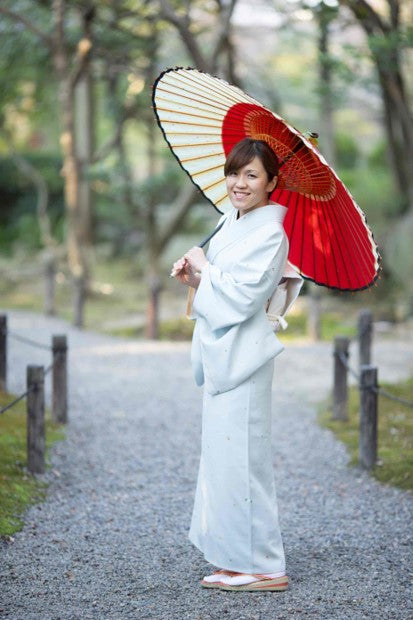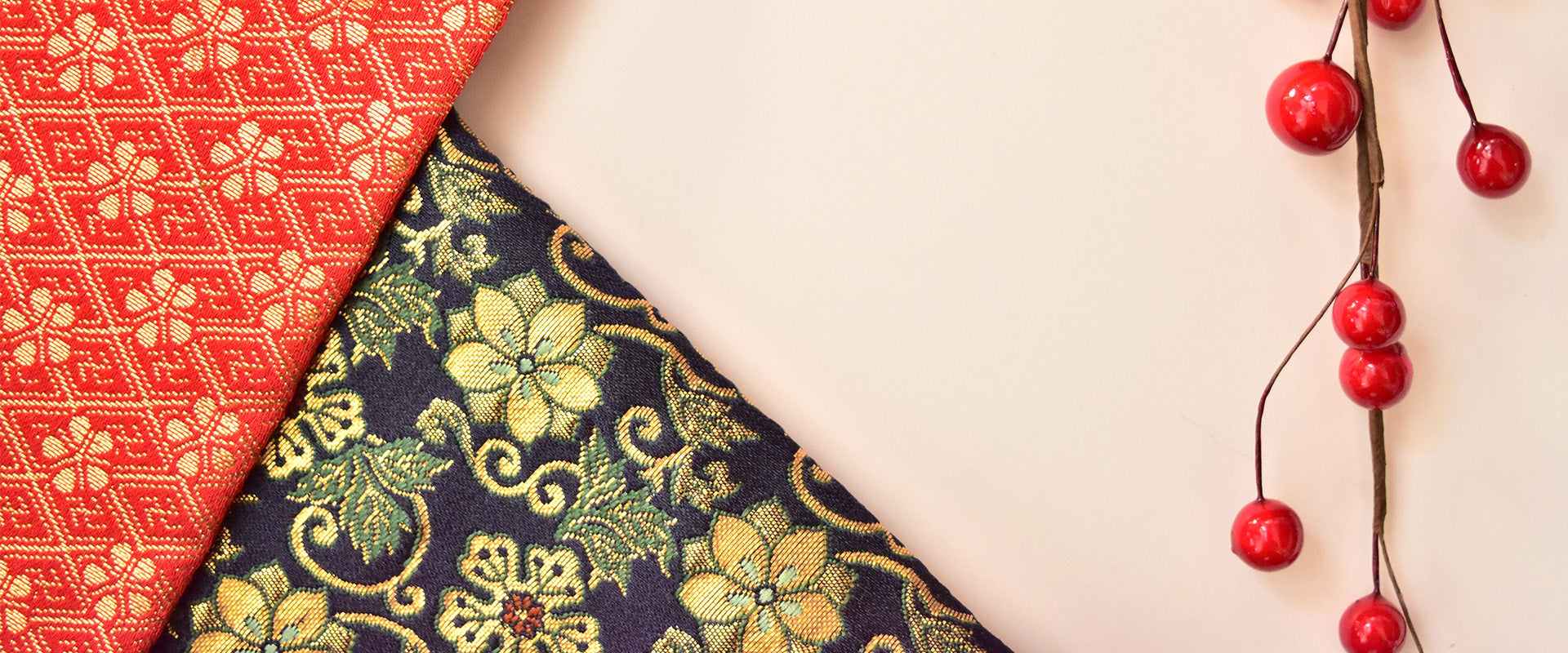
開発者 井上智子
開発者の想い
アメリカに留学する娘が言ったひとこと…。
「本当は着物を持っていきたいけど、着物は自分で着られないから、自分で着られる浴衣を持って行く。」
浴衣のドレスコードはカジュアルです。
着用シーンは寝衣または部屋着、夜店が出る夏祭りくらいなら外出を許される程度。
正式なパーティーには着ていけません。
ニューヨークでのパーティーや、フォーマルシーンで、日本人として凛と美しく遜色ない着姿になる着物を「娘の為に開発しよう!」と強く思いました。
車、電子レンジ、スマホ、現代人は仕組みを知らなくても簡単・便利に使っています。
私は、そんな和装バージョンを作りたかったのです。
着物は着ている人以上に、見る人が喜びます。
着物は、世界中で絶賛され喜ばれる民族衣装だと思っています。
従来の着物より美しく、だれもが簡単に着られる着物「kimono fit®」は、長年にわたり婚礼着付けを行ってきたベテランの着付師が開発した着物です。
kimono fit®は、国内外のすべての着物ファンに「簡単に・美しく・着物を楽しんでいただきたい」との想いから誕生しました。
kimono fit®誕生秘話
kimono fit®は婚礼着付師として長年の経験と実績をもつ井上智子が開発しました。
平面的に仕立てられた従来の着物を、立体的な人間の身体に美しく着付けるには、熟練の着付け技術が必要です。
従来の着物の着付けでは、見える部分に皺を寄せないために何本もの紐で固定したり、余った布を隠すように折りたたんだりと、折り紙ならぬ”折り布”の技術が必要でした。
井上は着付師として働きながら、ずっと考えていたことがあります。
「着物はうなじを美しく覗かせる為に、衿を無理して引きずり降ろして着るから、動いているうちに抜いた衿は戻ってきて着崩れる……。 分かり切っているのだから、最初から衿をくり抜いて仕立ててしまえばいいのに!」
この発想がkimono fit®の原点です。


開発者井上の娘
“アイディア品”が“kimono fit®”ブランドになるまで
立体裁断で仕立てた最初の3D着物は、アメリカ留学した娘のために作られました。
最初の5年間は、アメリカに住む娘と妹、東京の妹、福岡の井上の4人だけで「気軽に着られるアイディア着物」として楽しんでいたのです。
ところが、友人や知人から口コミで評判が広がり 「海外に着物を持っていき、自分で着たい」 「子供の七五三で着物を着たい」 と相談を受ける機会が増えてきました。
「3Dきものを必要としている人が居るのかもしれない。喜んで貰えたら嬉しい!」 と商品化を決意。
プライベートで楽しむアイディア品ではなく、様々な体形の方に美しく着ていただけるクオリティの追求が始まりました。
1,300人以上の方に試着体験を行い、意見を聞いて試行錯誤を繰り返す日々。
4人の縫製職人とともに、8年もの間改良を重ね完成したのがkimono fit®です!

世界初のハイブリッド縫製
様々な体形の方にフィットして、従来の着物より美しい着姿に仕上がる秘密は、縫製方法にあります。
kimono fit®の着物は、ハイブリッドスタイルのセミオーダーで仕立てられます。
ハイブリッドスタイルの縫製とは、一度プレタポルテ(高級既製服)として仕立てた着物に、和裁の職人がお客様の身長に合わせて細かな修正を施します。
この2つの工程を経て、お一人お一人の身体にあった着物が完成するのです。

